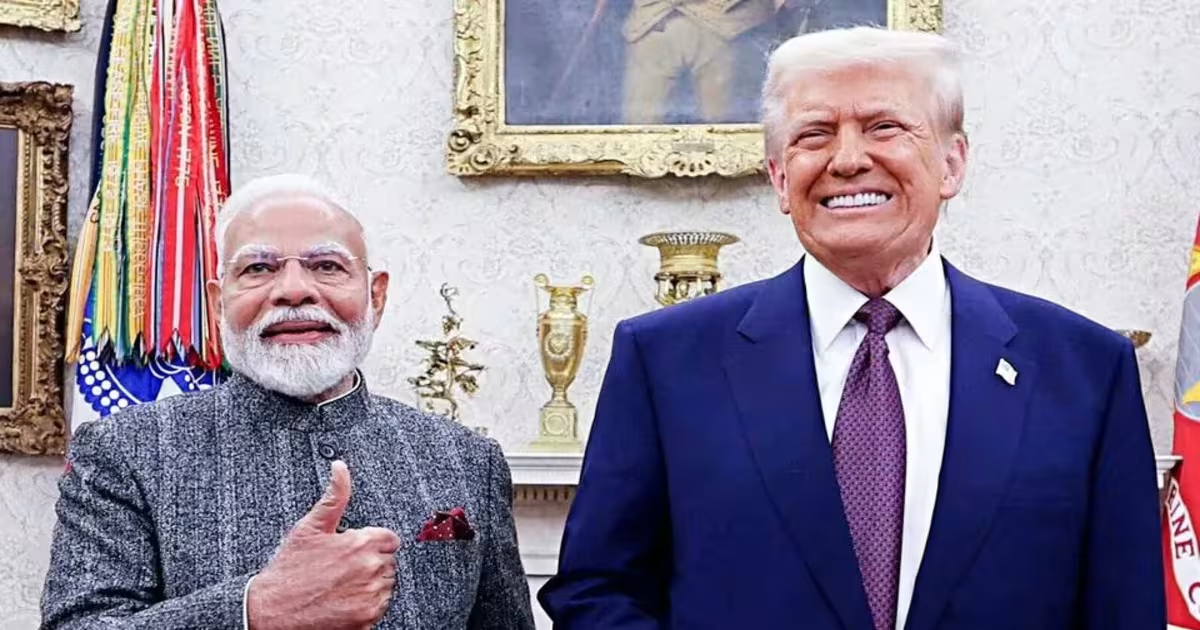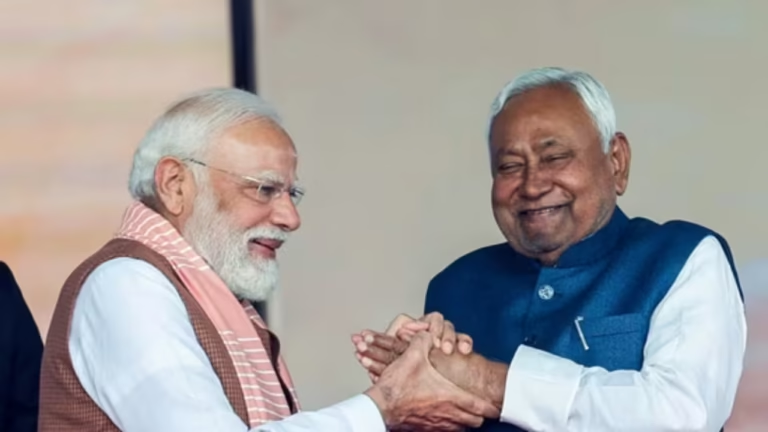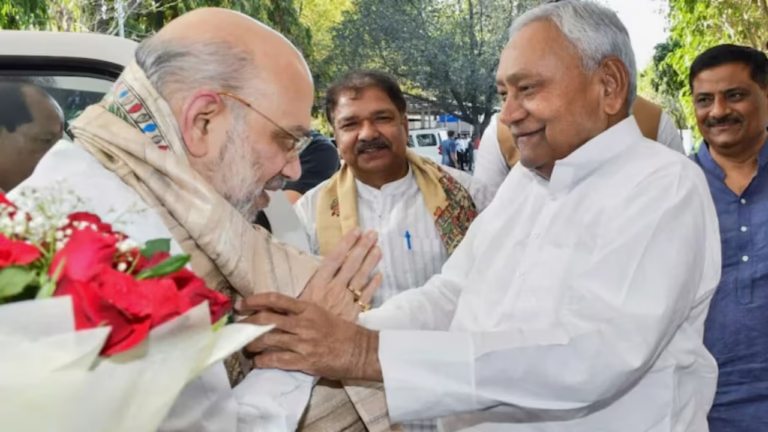
Donald Trump pointing sternly in front of split U.S. and Indian flags, with a Russian oil barrel between them—symbolizing rising geopolitical trade tensions.
Published on: August 5, 2025 at 00:54
On August 4, 2025, former U.S. President Donald Trump dramatically escalated trade tensions with India, warning of steep tariffs tied to India’s growing imports of Russian oil. He accused India of buying discounted Moscow crude and reselling it for large profits, thus indirectly supporting Russia’s war in Ukraine.
What Trump Said?

-
Trump announced a 25% blanket tariff on Indian goods, plus a new unspecified “penalty” linked to India’s oil and defence purchases from Russia.
-
He also threatened secondary tariffs of up to 100% on countries that continue to trade in Russian energy and military goods if Moscow does not end the war in Ukraine within Trump’s ultimatum window.
-
These measures coincide with legislative momentum in the U.S. Senate for sanctions up to 500% tariffs on countries importing Russian energy or uranium
India’s Oil Strategy: Economic Reality or Geopolitical Friction?
Today, Russia supplies 35–40% of India’s crude oil—roughly 1.6–1.7 million barrels per day, making it India’s top supplier after China. These imports rose from virtually zero before the Ukraine war to nearly half of India’s total crude demand, driven by steep discounts from Russian refiners. Despite U.S. and EU sanctions targeting Russian oil companies and tanker operators, India remains committed to this supply due to affordability and refining capacity concerns
India Pushes Back: “Unjustified and Unreasonable”
India’s Ministry of External Affairs condemned Trump’s move as “unjustified and unreasonable”, asserting that oil purchases are driven by necessity, not profit-seeking. MEA officials pointed out that Western economies, including those condemning India, continue to trade with Russia in energy and other sectors—a double standard, they allege.
Risks & Wider Impact on Trade and Economy
Analysts warn that a forced pivot from Russian oil could raise India’s oil import bill by $9–11 billion, sparking inflation and thinning refinery margins. Firms like BPCL are already exploring alternative crude sources from the Middle East, North Sea, and the U.S., but these come at a higher cost
What Lies Ahead: Bilateral Trade at a Crossroads

India–U.S. trade talks continue amid rising tensions. Even with trade aspirations like Mission 500, both sides remain locked in tough negotiations on agriculture, dairy, and energy access. The dispute could seriously impact US–India trade worth $186 billion annually, affecting exports in pharmaceuticals, telecom equipment, auto components, and more.
Expert Perspective
Trump’s tariff threats represent a new phase in trade policy—a geopolitical weaponization of tariffs. As analysts and policymakers debate the potential fallout, the stakes are clear: India must navigate energy security, inflation risks, and global diplomacy—all while defending its sovereign trade decisions.
India’s insistence on energy-driven imports and America’s new tariff strategy place both countries in a high-stakes standoff with considerable economic and geopolitical ramificatio
This article is based on publicly available data, news reports, and industry analyses at the time of writing. All statistics, company names, and references mentioned are for informational purposes only. The content is intended for general awareness and does not constitute financial, investment, or policy advice. While we strive for accuracy, we recommend verifying key facts from official sources.
FAQs
1. Why is Donald Trump threatening tariffs on India in 2025?
Trump accuses India of profiting from discounted Russian oil and indirectly funding the Ukraine war, prompting new tariff threats.
2. How much Russian oil does India import?
As of 2025, Russia supplies over 35% of India’s crude oil—about 1.6 million barrels per day.
3. What impact could U.S. tariffs have on India’s economy?
Higher tariffs may raise import costs, disrupt exports, and trigger inflation due to costlier oil alternatives.
4. Did India respond to Trump’s tariff warning?
Yes, India’s Ministry of External Affairs called the threats “unjustified and unreasonable,” defending its energy choices as strategic.
5. Could this lead to a full-scale U.S.–India trade war?
It’s possible if diplomatic talks fail, as both nations are key trading partners with over $186 billion in annual trade.






1 thought on “Trump’s Tariff War on India: Why Russian Oil Could Trigger a Major Trade Fallout”